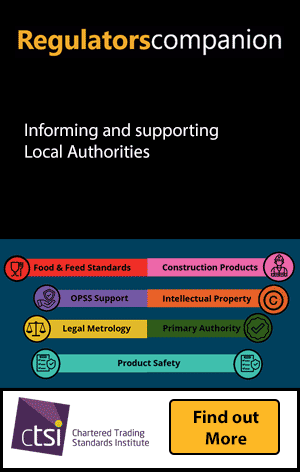AXELOS
|
|
Introducing the new PRINCE2® 7 AI Practice Guide
Blog posted by: Martin Paver, CEO & Founder, Projecting Success Ltd, CEO & Founder, Projecting Success Ltd.
With AI capabilities advancing rapidly – and the latest PRINCE2 7 guidance now launched –there is huge potential to leverage these innovations to transform project delivery.
Therefore, PeopleCert has released a timely new practice guide focused on integrating artificial intelligence (AI) into PRINCE2 project management. This practical guide enables PRINCE2 practitioners to capitalise on AI and data analytics to drive more informed decisions and efficient processes.
The guide coincides with AI and machine learning going mainstream over the past 12 months, catalyzed by ChatGPT. Technology behemoths are getting in on the action, with Microsoft now exploring AI integration into products like PowerBI and recently launched Microsoft Copilot. I have been championing the use of advanced data analytics in project management since at least 2017, but it is now unavoidable.
As project management can be a very process-focused discipline, AI tools can help us automate some of these processes. For example, a new business case can be partially auto-populated using AI trained on a database of many previous projects. We can also use advanced data analytics to start to predict the future and improve project outcomes.
Why do we need the PRINCE2 7 AI Practice Guide?
By applying a PRINCE2 lens, professionals can consider targeted AI applications across principles, processes and practices. Workflow automation engines may guide teams through processes more seamlessly, while machine learning can analyze thousands of prior projects to uncover insights, suggest answers or flag areas of concern.
This data could feed into previously manual tasks like risk planning and project document creation to boost productivity. In identifying and managing risk – tasks largely reliant on the experience of the project manager – machine learning can interrogate vast datasets and make decisions and predictions much more accurately than people. It can reveal risks, anticipate likely variances, indicate how they may emerge, identify lead indicators, provide insights into how to manage contingency and how to mitigate these challenges.
The new guide explains key terminology clearly, without assuming prior knowledge. Practical scenarios demonstrate the art of the possible, inspiring readers to reimagine AI-enabled delivery. The opportunities span simple productivity improvements and automating repetitive tasks, to redefining roles as machines take on more complex work.
Data literacy in project management
Developing data literacy is crucial to maximize the advantages of big data and predictive models. Understanding the technology landscape will foster collaboration with data specialists and critical evaluation of tools to fit project needs. Appreciating the dependence on data quality is also vital – while machines can process volumes of data to anticipate issues, human judgment remains essential to interpret meaningful insights.
Augmenting skills and thinking more strategically
As AI assumes greater responsibility for delivery tasks, ignoring it carries risks. Professionals who fail to skill up may find their roles hollowed out or obsolete. Those proactively embracing innovation will gain benefits like freeing up capacity and boosting predictive abilities. Preventing problems beats reactive firefighting, enabling more strategic thinking by project professionals and business leaders.
Individuals and organizations must determine whether to dip their toes in the water or dive deeper, by aligning these innovations with their goals and strengths. While some may opt for a brief YouTube video introduction, others will pursue extensive training and qualifications to truly transform their practice. Professionals fluent in applying data analytics will rise from being passengers to superusers of this technology, optimising and automating parts of project delivery. But we must remember, the old adage of “garbage in, garbage out” remains true for AI.
PeopleCert's guide enables PRINCE2 practitioners to capitalize on augmenting their skills with AI. Blending these remarkable capabilities with an integrated project management method promises substantial gains in productivity, insight and value. Fundamentally reimagining certain processes and practices in light of advanced analytics can free up capacity to focus more on strategic priorities. And organizations wanting to integrate analytics with PRINCE2 will need to evaluate when bespoke development is needed, or where pre-built tools will suffice.
Developing foundational data literacy across an organization is vital. This means professionals questioning data and understanding how to collaborate with specialists. Upskilling through training and integrating data-savvy talent lays the groundwork for project success; enabling project teams to see into the future and anticipate issues before they happen. The new PRINCE2 7 AI practice guide will help project managers navigate this route.
Original article link: https://www.axelos.com/resource-hub/blog/prince2_7_ai_practice_guide
| Home | Qualifications | Training | Licencing | Store | News |
Latest News from
AXELOS
PRINCE2 7 – Progress: making a good practice better still
28/11/2023 10:20:00Blog posted by: Richard Rose – Co-author, PRINCE2 7, As an independent consultant and trainer in programme, project and change management, Richard is passionate and fervent about the value of delivering value-added training, mentoring and coaching. www.richardarose.co.uk Richard is the lead trainer and author of the MSP and AgilePM® courses offered by Explosive Learning Solutions (ELS) as well as delivering PRINCE2®, MoP® and P3O® courses for ELS and other Accredited Training Organizations. www.elsbusinesstraining.co.uk, 23 November 2023.


